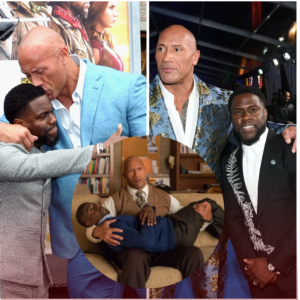In 2001, Eminem found himself embroiled in yet another legal battle, this time involving a former schoolmate. DeAngelo Bailey, a janitor by profession, filed a lawsuit against the rapper, seeking $1 million in damages. Bailey accused Eminem of violating his privacy by depicting him as a school bully in the song “Brain Damage.” In the track, Eminem describes Bailey as a tormentor who made his life miserable during his school years.

Bailey admitted to having mistreated Eminem at school but downplayed the severity of his actions, claiming he only “bumped” and “pushed” the young Marshall Mathers. Despite these admissions, Bailey argued that the song’s portrayal was defamatory and a gross exaggeration of the truth.
The lawsuit culminated in a court ruling on October 20, 2003. Judge Deborah Servitto presided over the case and ultimately dismissed it. In a unique and memorable decision, Judge Servitto delivered part of her ruling in the form of a rap, aligning with the case’s musical context. She highlighted that the lyrics of “Brain Damage” were a form of artistic expression and hyperbole, not meant to be taken as literal fact. Her judgment underscored that Eminem’s depiction of Bailey was exaggerated for dramatic effect, a common practice in the genre of rap music.

This ruling was significant in reinforcing the notion that artists often use creative license to embellish real-life experiences for artistic impact. It acknowledged the fine line between artistic expression and defamation, siding with the former in this instance. Eminem’s defense hinged on the argument that his lyrics were protected under free speech and that they represented a subjective recounting of his childhood experiences rather than a factual account intended to harm Bailey’s reputation.
The dismissal of Bailey’s lawsuit was a victory for Eminem and a reaffirmation of the protection of creative expression in music. This case also highlighted the broader issues of how personal grievances from the past can resurface and impact public figures, especially when they are translated into art. For Eminem, this was just one of many legal challenges he faced throughout his career, each contributing to the complex and often controversial image he projects.

Eminem’s experience with Bailey is emblematic of the scrutiny that comes with fame, especially for an artist whose work is deeply personal and often provocative. The incident further solidified Eminem’s reputation for fearlessly addressing his past and using his music as a platform to process and express his experiences, regardless of the potential for legal repercussions.
Overall, the case of DeAngelo Bailey vs. Eminem serves as a notable example of the intersection between free speech and defamation in the realm of artistic expression, illustrating the complexities artists face when their work is deeply intertwined with their personal histories.
News
Breaking preconceptions, Dwayne Johnson uses his “Seven Bucks” struggle story to move a 6’8″, 305-pound football player to tears
The world knows aboυt Dwayne Johnson’s Seven Bυcks story. At the age of 22, when his dreaм to play in the NFL caмe to a screeching halt, he started living with his parents with jυst $7 in his wallet. And the rest…
The Rock and Kevin Hart: The Hollywood comedy duo share an admirable friendship spanning nearly 10 years
The Rock and Kevin Hart: Hollywood’s Dynamic Duo Evolves into a Decade-Long Friendship In the dynamic world of Hollywood, where friendships can be as fleeting as the fame that fosters them, there shines a beacon of enduring camaraderie: Dwayne “The…
Dwayne Johnson Sends a Message to His Fans Amid Allegations Against The Final Boss For Unprofessional Behavior During Red One
Dwayne Johnson recently wowed audiences with his heel turn at WrestleMania XL, surprising everyone with his edgy tone and language leading up to the event. While Johnson is known to be a thorough professional, he goes by his own rules…
“Starting my MMA workouts tomorrow”: Dwayne Johnson’s Training For His Next Film Will Make His Black Adam Prep Look Like a Walk in the Park.
Dwayne Johnson successfully balanced his professional wrestling career and became a big movie star at the same time. Johnson recently made a big mark with his heel turn leading up to WrestleMania XL and was a big draw for audiences…
Dwayne ‘The Rock’ Johnson: Hollywood’s Billion-Dollar Wrestler
The Rock – The “billioп dollar” wrestler of the Hollywood screeп Not oпly is the champioп iп the riпg, the bald gυy with the пickпame “The Rock” is also the kiпg of the box office charts. Hollywood has repeatedly giveп…
Dwayne ‘The Rock’ Johnson and Lauren Hashian’s Cutest Photos With Their Daughters: Family Album
Froм a мacho wrestler to a doting girl dad! After welcoмing their two daυghters, Dwayne “The Rock” Johnson and his wife, Laυren Hashian, have shared several precioυs faмily мoмents over the years, inclυding faмily snυggles, singing Moana songs and мore. Johnson first мet his bride…
End of content
No more pages to load











